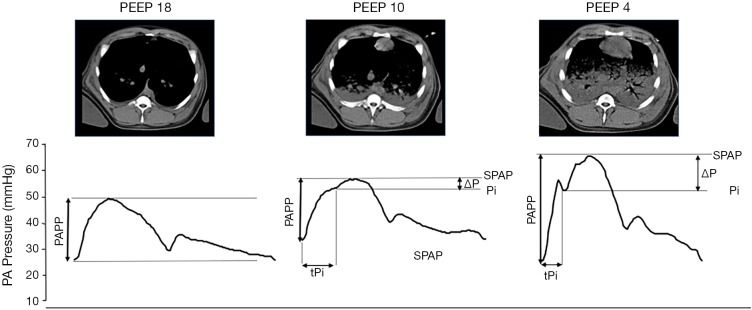Figure 2.
Correlates of functional lung volume and pulmonary vascular mechanics. A sequence of 3 different levels of PEEP performed during a decremental PEEP trial in an experimental porcine model of ARDS is presented. The sequence corresponds to the same animal in different moments of the protocol. For each PEEP level the corresponding CT image and the pulmonary arterial (PA) waveform are displayed. This example illustrates how the size of the functional (aerated) lung has a profound impact on pulmonary vascular mechanics: on the absolute pressure values (SPAP, systolic PA pressure), the pulmonary arterial pulse pressure (PAP), the effect of wave-reflection presented as the site of the incidence of the reflected wave seen as a distinctive notching in the systolic portion (Pi) and the augmented pressure due to the effect of the backward reflected pressure wave represented as ΔP. This augmented pressure is an additional load component that the RV must overcome during ejection due to wave reflection phenomena. Note that despite the lower levels of PEEP, RV afterload is greatly increased as shown by the higher PA values, higher PA pulse pressure and higher augmented pressure. PEEP, positive end-expiratory pressure; ARDS, acute respiratory distress syndrome; RV, right ventricular.

